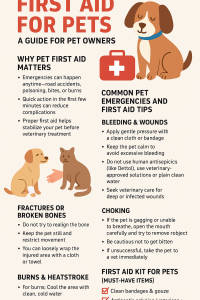Zoonotic diseases—those transmitted from animals to humans—remain one of the most serious public health challenges worldwide. Among them, rabies is one of the deadliest yet entirely preventable diseases. In Pakistan, rabies continues to pose a significant threat to both humans and animals due to limited vaccination coverage, stray dog populations, and lack of public awareness. Strengthening community knowledge about this disease is essential to save lives.
What is Rabies?
Rabies is a viral disease that affects the central nervous system of mammals, including humans. Once symptoms appear, rabies is almost always fatal. The virus is usually transmitted through the bite or scratch of a rabid animal, most commonly dogs.
Rabies Situation in Pakistan (2025)
- Pakistan reports thousands of dog-bite cases each year, with a significant portion resulting in rabies infections.
- Limited access to timely post-exposure prophylaxis (PEP), especially in rural areas, increases the risk of fatalities.
- Stray dog overpopulation continues to fuel the spread of rabies.
- Public health campaigns have increased in 2025, but vaccination coverage is still not sufficient.
Symptoms of Rabies in Humans
Rabies has an incubation period that can range from weeks to months. Early recognition of symptoms is critical, although treatment after symptom onset is usually ineffective.
Early Symptoms
- Fever
- Headache
- Fatigue and weakness
- Pain or tingling at the bite site
Progressive Symptoms
- Anxiety, confusion, and agitation
- Difficulty swallowing and hydrophobia (fear of water)
- Excessive salivation
- Paralysis and coma
- Death (usually within days of symptom onset)
Rabies in Animals
Animals infected with rabies often display:
- Sudden behavioral changes (aggression, restlessness, or unusual friendliness)
- Excessive drooling and difficulty swallowing
- Paralysis and seizures
Veterinarians should remain vigilant and report suspected cases promptly.
Prevention of Rabies
Rabies can be effectively prevented with the right measures:
- Dog Vaccination
- Annual vaccination of pets and community dogs is the most effective strategy.
- Mass dog vaccination campaigns help reduce transmission in stray populations.
- Public Awareness
- Educating communities about responsible pet ownership and avoiding contact with stray animals.
- Immediate washing of wounds with soap and running water after a bite.
- Post-Exposure Prophylaxis (PEP)
- Prompt administration of rabies vaccine and, if necessary, rabies immunoglobulin after exposure is life-saving.
- Stray Dog Population Management
- Humane approaches such as vaccination and sterilization programs are essential.
The Role of Vaccination in 2025
Vaccination remains the cornerstone of rabies control in Pakistan:
- For humans: Pre-exposure vaccination is recommended for high-risk groups (veterinarians, animal handlers, healthcare workers).
- For animals: Widespread dog vaccination campaigns are crucial to break the transmission cycle.
By scaling up mass vaccination programs, Pakistan can align with the global goal of “Zero Human Rabies Deaths by 2030.”
Final Thoughts
Rabies is a 100% preventable disease, yet it continues to claim lives in Pakistan due to inadequate awareness, limited vaccination coverage, and challenges in stray dog control. By promoting vaccination, timely medical care, and public education, we can protect both animals and humans from this deadly zoonotic disease.
Public health professionals, veterinarians, and communities must work together to ensure that rabies becomes a disease of the past in Pakistan.




